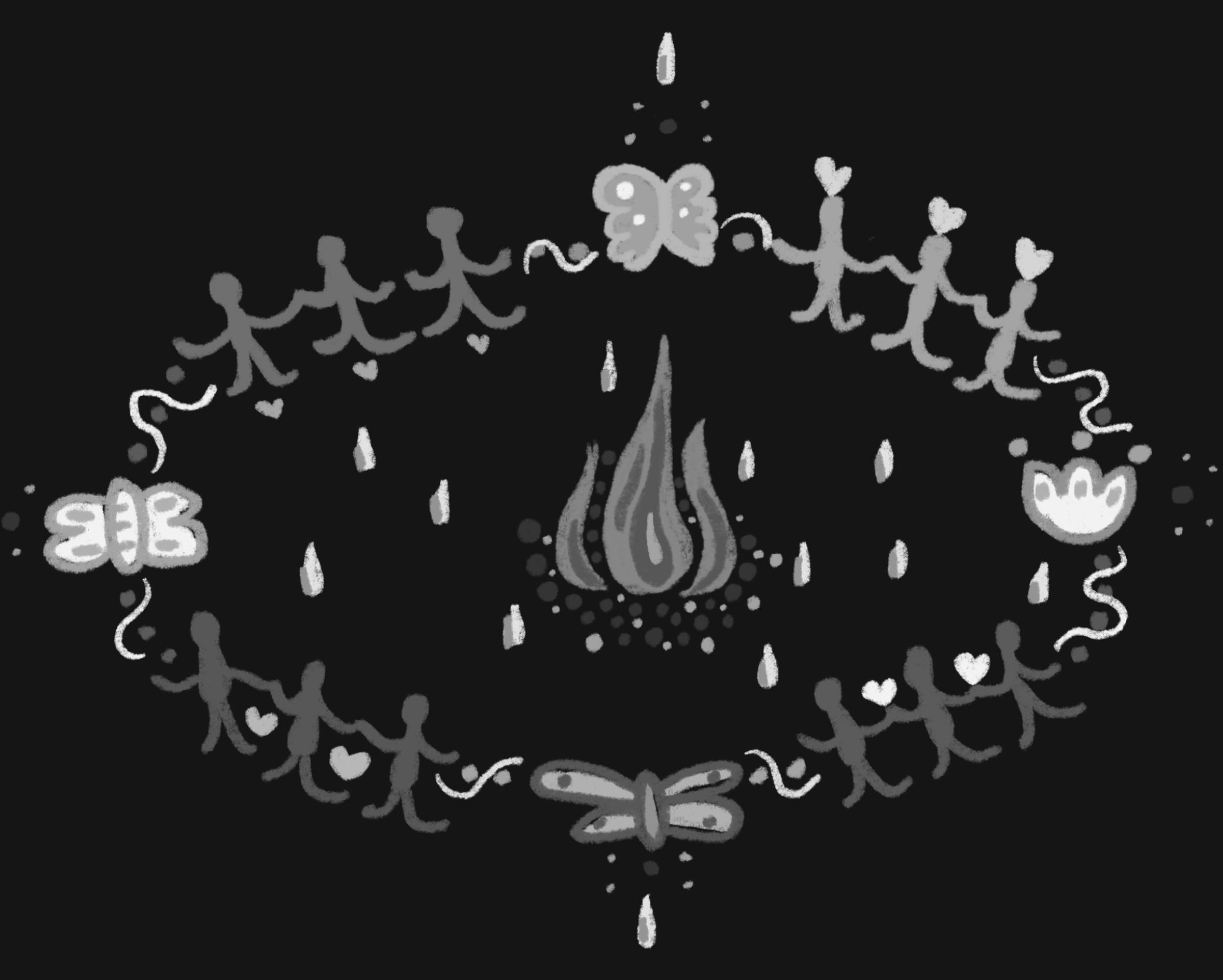
4 minute read
sNOw: Community reacts
For the first time in over 50 years, the Claremont Colleges witnessed weather phenomena highly unusual in the city of trees and PhDs: snow falling on campus.
On Wednesday, March 1, around 1 p.m., a cold afternoon drew congregations of eager students when large flakes of snow started falling on campus. Members of the community rushed out of dining halls, residence dorms and academic buildings to experience the sudden snowfall.
Advertisement
Although 2023 is the first year since 1972 where Claremont has experienced a documented snowfall, the March 1 snowfall was the second time in less than a week that students enjoyed minutes of flurries at the 5Cs.
Around 10:30 a.m. last Saturday, Feb. 25, following days of stormy weather, snow began falling from the sky. Videos of snowflakes circled around social media, showing snow falling on Pomona College’s coop fountain, outside Harvey Mudd College dormitories and on Scripps College lawns.
On both occasions, the temperature in southern Claremont was warm enough that the flakes melted soon after they reached the ground, but that didn’t stop some students from making snowballs out of the accumulated graupel or catching the flakes with their hands.
For some students, like Celine Aoki SC ’26, Saturday was the first time they ever saw snow. Aoki, who has lived in Southern California her whole life, said she was eating brunch at Mallott when she saw other students rush outside the dining hall. She quickly walked out and showed her parents, who were on Facetime.
“It felt like a very surreal moment,” Aoki said. “It made me feel like I was super young again, experiencing things for the first time. I don’t get a lot of those opportunities anymore now that I’m growing up.”
Although uncommon in Claremont, local media anticipated that snow might fall in the town after Southern California received its first blizzard warning since 1989. The blizzard, which is the second the National Weather Service has on record for the area, has brought heavy rains across Southern California and large amounts of snow to mountains — such as Mount Baldy — since Friday.
In 1938, Claremont saw a similar pattern of storms and snow, Pomona environmental analysis profes - sor Char Miller said. The deep snowpack in the mountains was melted by rain, and the storm runoff resulted in a massive flood which tore through Claremont and structures at Scripps and Pomona, the only two colleges that existed at the time.
To prevent future floods, the San Antonio Dam was built in 1956. According to the City of Claremont’s Local Hazard Mitigation Plan, the dam and flood channels have minimized the damage flooding incidents could bring to the area, although there’s still a low risk of dam inundation.
“I don’t see [a flood] necessarily happening, but the pattern is pretty close,” Miller said, adding that if this were to happen, more buildings in the area would mitigate the damage of a strong flood.
Heavy rains such as these used to be normal in the area but had ceased for over a decade because of California’s ongoing drought, Miller said. He added that this year’s weather is an exception to the dryness of the region, not the new norm.
“We assume drought is temporary and that wet is normal. The reverse is true. California is in a state of drought, not a state in drought,” Miller said. “As joyous as those flakes were and the rain that came as well, they don’t do a lot for the larger water deficit … we need four years of this normal rain pattern to even get back to something we might consider to be normal. And that’s probably unlikely.”
In the coming years, Miller said the region will continue to experience a weather pattern described as whiplash weather, where forecasts toggle between extremes.
“We have these very hot summers [with] wildfires and then shortly thereafter, there might be a devastating thunderstorm that produces floods in the very areas that burned,” Miller said. “So we’re looking at more of what we would imagine to be more unstable climate that flips back and forth radically.”
Still, Miller said he was upset he missed Saturday’s snow, as he was in Los Angeles with family at the time.
“It’s kind of magical when it falls in a place with palm trees,” he said. “And, you know, it’s one sort of treasure, even though it seems so bizarre.”

Corrections
In Issue 13, a news article on Pitzer worker’s unionization efforts, it stated that some workers had been fired by Pitzer, directly. They were not fired by Pitzer. They were fired by BAMCO. In the same article, Natasha Wong PZ ’22 was mis-paraphrased. The Editorial Board addressed these errors more elaborately in our Opinions section. In Issue 14, a special projects article on the dissolution of the BSC misattributed Kit Morgan PO ’75’s graduation year. In a news article on the CMC committe, Josh Nagra CM ’23 did not have his graduation year listed. In a sports article, Dominiqic Williams was misspelled as Dominic Williams. TSL regrets the error.
she and McGinn have been doing to center compassion in the Title IX Office continues.
“Often it can feel like it’s such a logistical office with this really important protocol-related and procedure-related role,” she said. “But it’s also really important to have compassion and communi- ty trust.” Last year, Pitzer students openly criticized the Pitzer Title IX office and called for personnel overhaul, eventually prompting several staffing and policy changes for the office. Although the office changes were prior to her arrival as a student, Edmundson explained that the Title IX Office should have been leading with compassion from the beginning.

“Hopefully the new ethos of Title IX moving forward is compassion, care, community,” Edmundson said. “And that’s really, I think, what the workshop is trying to build.”






